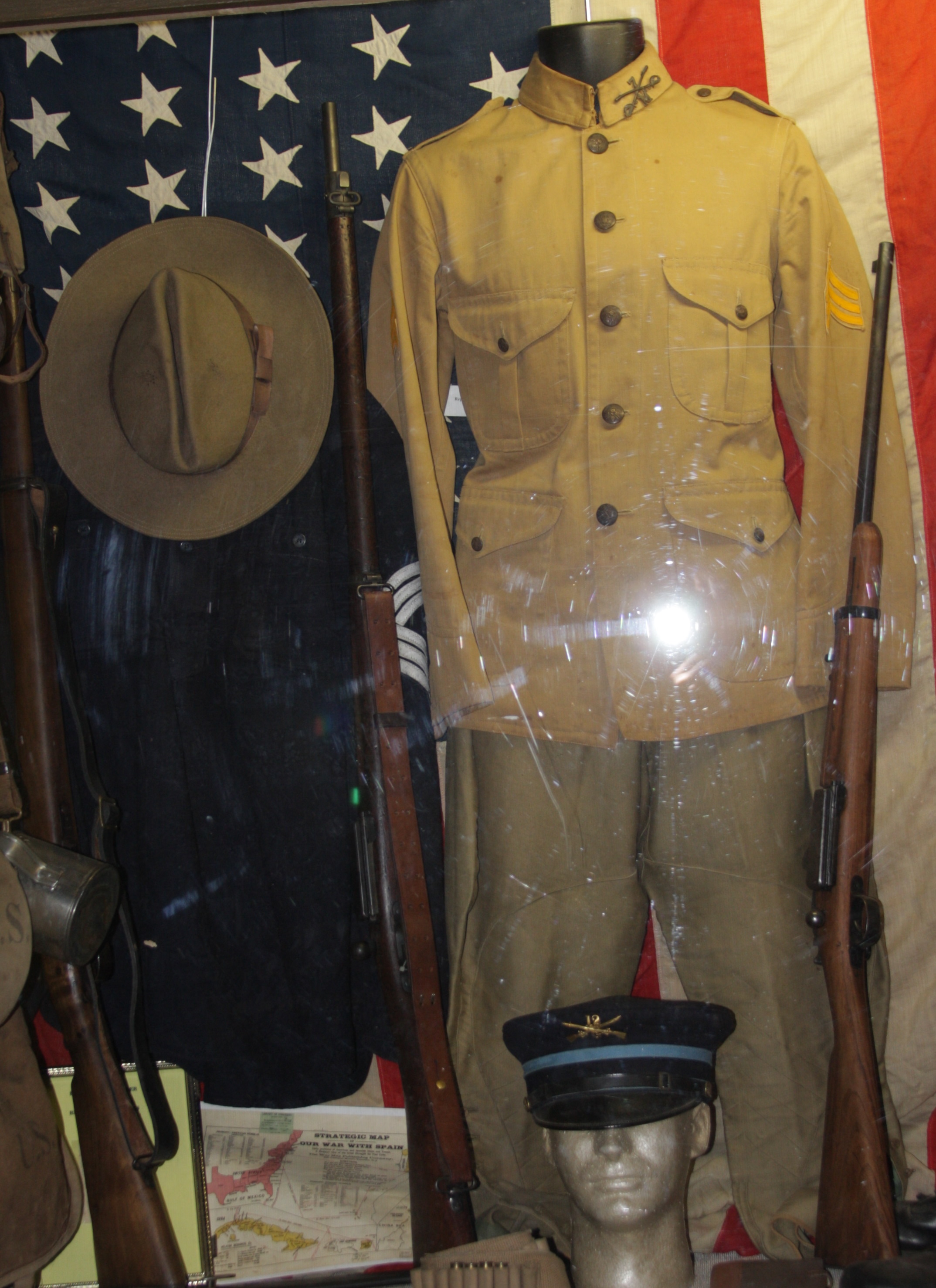With the unexplained sinking of the U. S, Navy's armored cruiser USS Maine (ACR-1) in Havana harbor on Feb. 15, 1898. U.S. Congress issued a resolutions that declared Cuba’s right to independence, demanded the withdrawal of Spain’s armed forces from the island, and authorized the President’s use of force to secure that withdrawal while, renouncing any U.S. design for annexing Cuba. Spain declared war on the United States on April 24, followed by a U.S. declaration of war on the 25th, which was made retroactive to April 21. The ensuing war was pathetically one-sided, since Spain had readied neither its army nor its navy for a distant war with the formidable power of the United States.
Pacific Theater
Commodore George Dewey led a U.S. naval squadron into Manila Bay in the Philippines on May 1, 1898, and destroyed the anchored Spanish fleet in a leisurely morning engagement that cost only seven American seamen wounded. Manila itself was occupied by U.S. troops by August.
On June 20, a U.S. fleet consisting of the protected cruiser USS Charleston and three transports carrying troops to the Philippines under the command of Captain Glass, entered Guam's Harbor. The USS Charleston fired a few cannon rounds at Fort Santa Cruz without receiving return fire. Two Spanish officials, not knowing that war had been declared and believing the firing had been a salute, came out to the USS Charleston to apologize for their inability to return the salute as they were out of gunpowder. Captain Glass informed them that the U.S. and Spain were at war. The Spanish surrender the island.

Caribbean Theater
In May, the fleet of Spanish Admiral Cervera had been spotted by American forces in Santiago harbor, where they had taken shelter for protection from sea attack. The major port of Santiago de Cuba was the main target of naval operations during the war. The 1898 invasion of Guantánamo Bay happened between June 6 and 10, with the first U.S. naval attack and subsequent successful landing of U.S. Marines with naval support.
The Americans planned to capture the city of Santiago de Cuba to destroy the Spanish army and Admiral Cervera's fleet. To reach Santiago they had to pass through concentrated Spanish defenses in the San Juan Hills and a small town in El Caney. The American forces were aided in Cuba by the pro-independence rebels. An army of regular troops and volunteers under Gen. William Shafter (and including Theodore Roosevelt and his 1st Volunteer Cavalry, the “Rough Riders”) landed on the coast east of Santiago and slowly advanced on the city in an effort to force Cervera’s fleet out of the harbor.
When the Spanish squadron finally attempted to leave the harbor on July 3, the American forces destroyed or grounded five of the six ships. Only one Spanish vessel, the new armored cruiser Cristóbal Colón, survived, but her captain hauled down her flag and scuttled her when the Americans finally caught up with her.
With the Spanish fleet no longer in Santiago harbor and the Spanish garrison already facing nationwide Cuban insurgent attacks and further wasted by yellow fever the Spanish surrendered the city of Santiago de Cuba to the American Army on July 17, thus effectively ending the war.
The main issue was Cuban independence the war was fought in both the Caribbean and the Pacific. U.S. naval power proved decisive. Madrid sued for peace with two obsolete Spanish squadrons sunk in Santiago de Cuba and Manila Bay and a third, more modern fleet recalled home to protect the Spanish coasts.
The result was the 1898 Treaty of Paris, negotiated on terms favorable to the U.S. which allowed it temporary control of Cuba and ceded ownership of Puerto Rico, Guam, and the Philippine islands. The cession of the Philippines involved a payment of $20 million ($575,760,000 today) to Spain by the U.S. to cover infrastructure owned by Spain.



